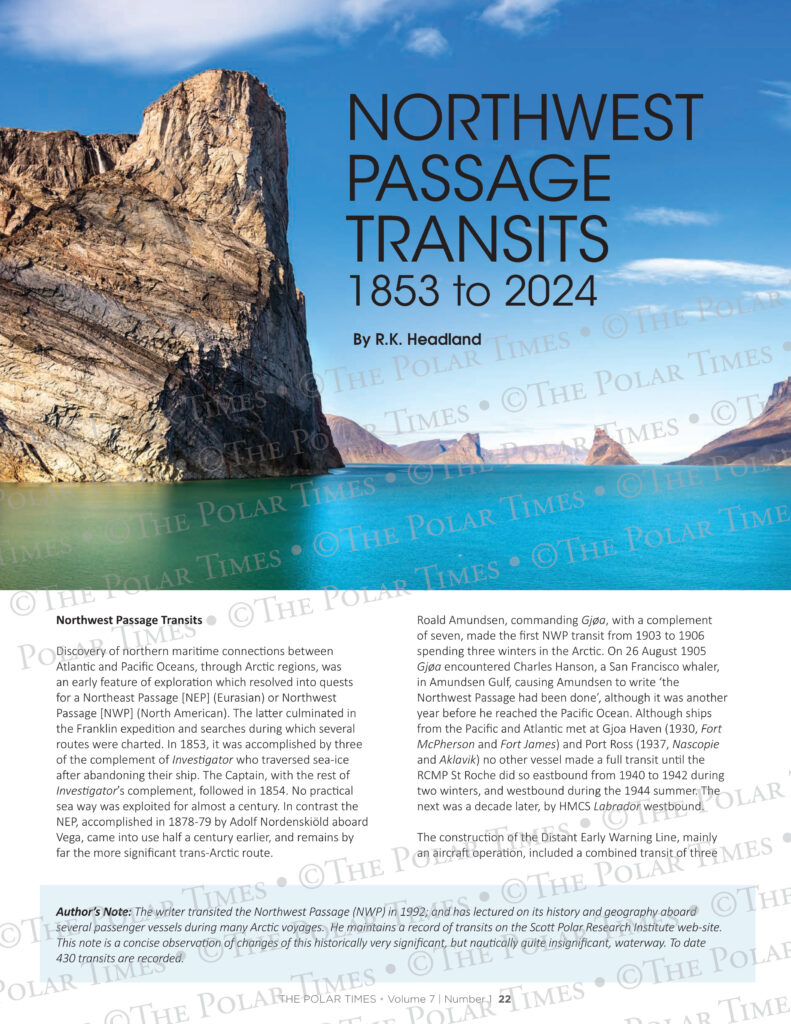
Here is a preview of what is inside The Polar Times latest issue, Spring/Summer 2025.
Discovery of northern maritime connections between Atlantic and Pacific Oceans, through Arctic regions, was an early feature of exploration which resolved into quests for a Northeast Passage NEP or Northwest Passage [NWP] (North American). The latter culminated in the Franklin expedition and searches during which several routes were charted. In 1853, it was accomplished by three of the complement of Investigator who traversed sea-ice after abandoning their ship. The Captain, with the rest of Investigator’s complement, followed in 1854. No practical sea way was exploited for almost a century. In contrast the NEP, accomplished in 1878-79 by Adolf Nordenskiöld aboard Vega, came into use half a century earlier, and remains by far the more significant trans-Arctic route.
Roald Amundsen, commanding Gjøa, with a complement of seven, made the first NWP transit from 1903 to 1906 spending three winters in the Arctic. On 26 August 1905 Gjøa encountered Charles Hanson, a San Francisco whaler, in Amundsen Gulf, causing Amundsen to write ‘the Northwest Passage had been done’, although it was another year before he reached the Pacific Ocean. Although ships from the Pacific and Atlantic met at Gjoa Haven (1930, Fort McPherson and Fort James) and Port Ross (1937, Nascopie and Aklavik) no other vessel made a full transit until the RCMP St Roche did so eastbound from 1940 to 1942 during two winters, and westbound during the 1944 summer. The next was a decade later, by HMCS Labrador westbound.
Author’s Note: The writer transited the Northwest Passage (NWP) in 1992; and has lectured on its history and geography aboard several passenger vessels during many Arctic voyages. He maintains a record of transits on the Scott Polar Research Institute web-site. This note is a concise observation of changes of this historically very significant, but nautically quite insignificant, waterway. To date 430 transits are recorded.